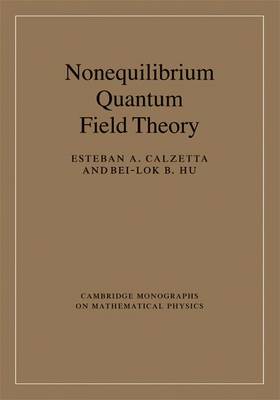Cambridge Monographs on Mathematical Physics
3 total works
Nonequilibrium Quantum Field Theory. Cambridge Monographs on Mathematical Physics.
by Bei-Lok B Hu and Esteban A Calzetta
Published 1 January 2008
The two pillars of modern physics are general relativity and quantum field theory, the former describes the large scale structure and dynamics of space-time, the latter, the microscopic constituents of matter. Combining the two yields quantum field theory in curved space-time, which is needed to understand quantum field processes in the early universe and black holes, such as the well-known Hawking effect. This book examines the effects of quantum field processes back-reacting on the background space-time which become important near the Planck time (10-43 sec). It explores the self-consistent description of both space-time and matter via the semiclassical Einstein equation of semiclassical gravity theory, exemplified by the inflationary cosmology, and fluctuations of quantum fields which underpin stochastic gravity, necessary for the description of metric fluctuations (space-time foams). Covering over four decades of thematic development, this book is a valuable resource for researchers interested in quantum field theory, gravitation and cosmology.
Bringing together the key ideas from nonequilibrium statistical mechanics and powerful methodology from quantum field theory, this book captures the essence of nonequilibrium quantum field theory. Beginning with the foundational aspects of the theory, the book presents important concepts and useful techniques, discusses issues of basic interest, and shows how thermal field, linear response, kinetic theories and hydrodynamics emerge. It also illustrates how these concepts and methodology are applied to current research topics including nonequilibrium phase transitions, thermalization in relativistic heavy ion collisions, the nonequilibrium dynamics of Bose-Einstein condensation, and the generation of structures from quantum fluctuations in the early Universe. Divided into five parts, with each part addressing a particular stage in the conceptual and technical development of the subject, this self-contained book is a valuable reference for graduate students and researchers in particle physics, gravitation, cosmology, atomic-optical and condensed matter physics.

